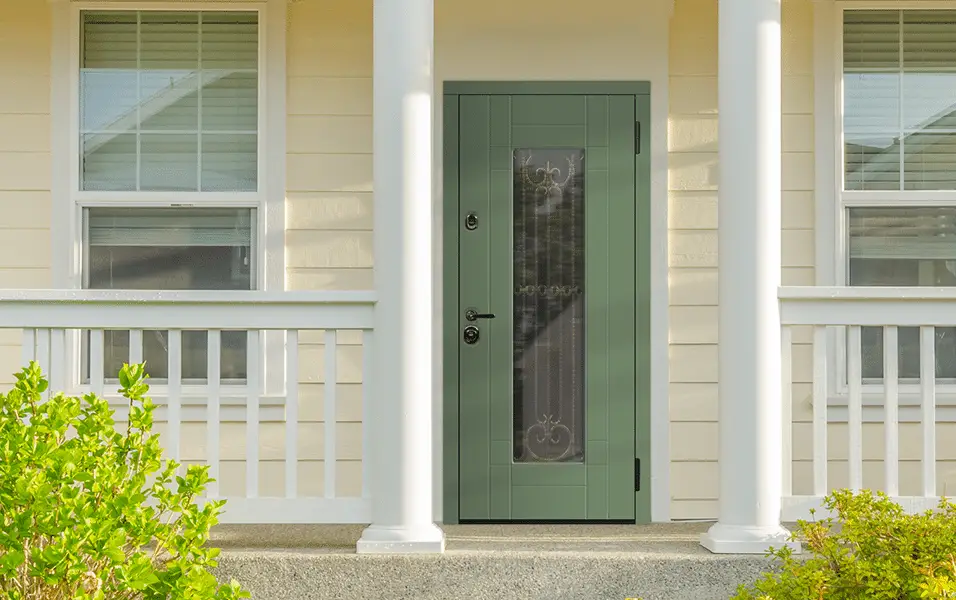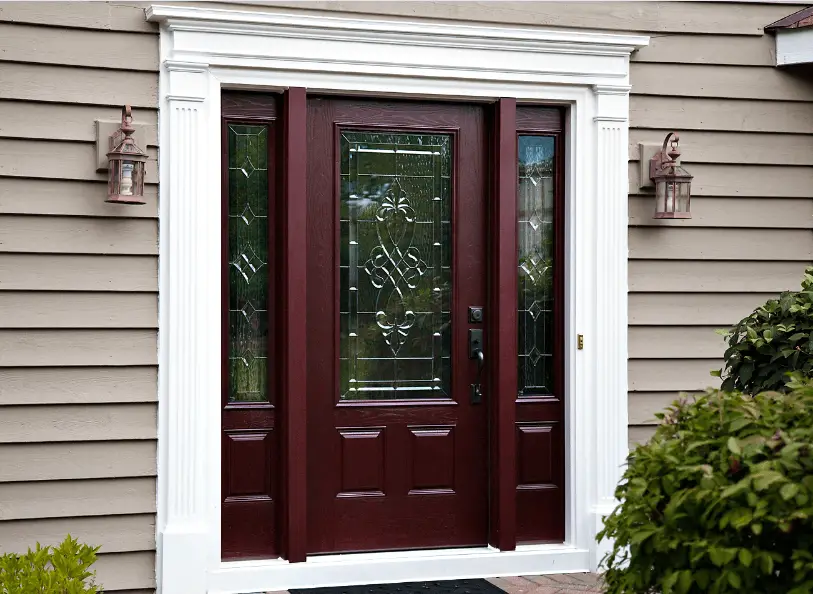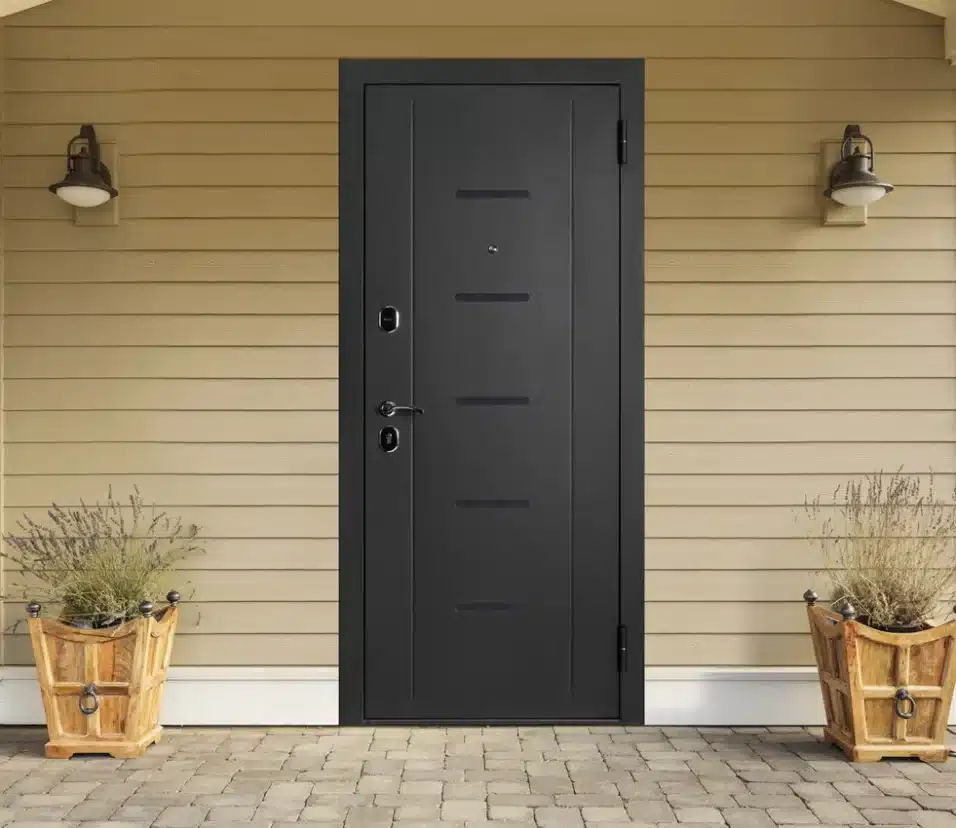How To Fix A Swollen Exterior Door
Introduction
How To Fix A Swollen Exterior Door: An exterior door serves as the gateway between the indoor haven and the ever-changing outdoors, offering security, insulation, and a seamless transition. Yet, the elements of nature can sometimes conspire to distort the door’s form, leading to a swollen exterior door that challenges its function and fit. When confronted with this issue, understanding the art of remediation becomes crucial to restoring the door’s operational harmony.
In this exploration, we delve into the intricacies of how to fix a swollen exterior door, unraveling a narrative that combines craftsmanship, practicality, and problem-solving.These layers of expertise are needed to navigate this therapeutic process, from understanding door swelling’s causes to mastering its treatment. The door’s proportions and alignment are altered to match nature’s whims with the homeowner’s goal.
Fixing a bulging exterior door shows a homeowner’s dedication to their home’s integrity. Through accuracy, patience, and understanding, the door is freed from swelling and restored as a useful and beautiful house feature. In this voyage of knowledge and repair, fixing a bulging external door combines art and technique, uniting nature and workmanship.

How do you fix a swollen outside door?
5 Ways to fix a swollen door
- Inspect the door for any obvious damage.
- Check the weatherstripping around the door.
- Make sure the door is properly sealed at the top and bottom.
- Adjust the hinges if necessary.
- If all else fails, you may need to replace the door.
Fixing a swollen exterior door demands a systematic approach to restore its seamless operation. The journey begins with identifying the underlying cause, often rooted in moisture absorption due to humid conditions or exposure to rain. Understanding the cause is pivotal in preventing a recurrence of the issue.
In cases of severe swelling that causes the door to stick or malfunction, removing the door from its hinges might be necessary. Once removed, the key step is allowing the door to dry thoroughly. A period of dry weather is ideal for enabling the wood to contract naturally, reducing its swollen state.
With the door in a dry and well-ventilated space, the process of remediation begins. Employing sandpaper or a plane, gently sand the swollen edges of the door. Patience is key here; gradual sanding prevents overzealous removal of material
Ensuring the door returns to its original dimensions.
If the door’s finish was compromised due to the swelling, re-sealing or repainting became an important consideration. This step not only restores its aesthetic but also adds a layer of protection against future moisture absorption.
Before rehanging the door, perform a thorough inspection of the hinges, screws, and hardware. Replace any damaged components to ensure smooth functionality. Once verified, carefully rehang the door on its hinges, ensuring it’s level and properly aligned.
Weatherstripping the door, either by adding new strips or replacing existing ones, enhances its insulation and contributes to its overall efficiency. By following these steps, a swollen exterior door can be transformed back into a functional and reliable element of your home’s exterior.
Will swollen door frame go back to normal?
Will a Swollen Door Go Back To Normal? Wood can expand and contract as it is exposed to moisture and changes in climate. However, if a door is swollen a great deal due to heat or moisture exposure, it is unlikely that it will revert to its original shape.
Whether a swollen door frame will return to its normal state depends on several factors, including the cause of the swelling, the severity of the issue, and the materials used in the door and frame construction. In many cases, a swollen door frame can indeed return to its original dimensions under the right conditions.
However, severe swelling or prolonged exposure to moisture might lead to more permanent damage. In some instances, the door frame might retain some residual deformation even after drying. Additionally, if the door frame is made of composite materials or has intricate designs, returning it to its exact original shape might be more challenging.
To encourage the door frame to return to normal, ensure proper ventilation and a dry environment. It’s important to address the underlying cause of the swelling to prevent further issues. If the swelling persists or the door frame remains misshapen, seeking professional assistance might be necessary to assess the extent of the damage and determine the best course of action.
How do you fix a swollen wood door at home?
Fixing a swollen wood door at home necessitates a systematic approach to restore its original shape and operational efficiency. The process begins with identifying the root cause of the swelling, which is often linked to moisture absorption due to high humidity or exposure to rain. Addressing this cause is essential to preventing its recurrence.
In cases of significant swelling that leads to sticking or malfunctioning, removing the door from its hinges becomes a prudent step. Once removed, allowing the door to dry out naturally is crucial. Placing it in a well-ventilated space, such as a garage or indoors, promotes the contraction of the wood as it dries.
With the door suitably dried, the careful process of remediation commences. Employing fine-grit sandpaper and gently sanding the swollen edges allows for gradual material removal, restoring the door’s original fit within the frame.
If the door’s finish has been compromised, resealing or repainting it serves to protect against future moisture absorption. Before rehanging, inspecting hinges, screws, and hardware ensures that the door functions smoothly. Rehanging is a precise task, demanding attention to alignment and levelness within the frame.
Incorporating new weatherstripping as part of the restoration guarantees a proper seal once the door is rehung, contributing to energy efficiency and insulation. Following these steps provides a practical and effective solution to fix a swollen wood door at home, reinstating its functionality and contributing to the longevity of your home’s components.

How do you fix a swollen exterior door?
If the swelling is minimal, you’ll be able to fix it easily by bringing a heat source close to the surface of the door. Allow the door to dry after you’ve brought a hair dryer, heat gun, or rotating fan closer to the surface.
When faced with a swollen exterior door, a methodical approach is essential for restoration. Begin by pinpointing the cause of the swelling, which is often linked to moisture exposure, humidity, or other environmental factors. Addressing the underlying issue is key to preventing its recurrence.
In cases where severe swelling leads to the door sticking or malfunctioning, removing the door from its hinges becomes a necessary step. Delicately detach the door using a screwdriver.
Once removed, facilitating drying is crucial. Place the door in a dry and well-ventilated space, allowing it to naturally regain its original dimensions over the course of several days to a week.
Once the door is sufficiently dry, the remediation process begins. Employ fine-grit sandpaper to gently sand the swollen areas, gradually removing excess material until the door fits seamlessly within its frame.
While the door is detached, seize the opportunity to inspect hinges, screws, and hardware for any signs of damage. Replace any compromised components to ensure smooth functionality.
Finally, proceed to rehang the door with precision. Attaching it to its hinges requires careful alignment and attention to detail to ensure it fits correctly within the frame. By following these steps, you can effectively address a swollen exterior door, restoring its optimal function and ensuring its longevity.
Will painting a door stop it from swelling?
To stop the swelling, you can coat your door with weather-resistant paint, which can help create a barrier and seal out moisture. Depending on the type of paint used and where in your home it’s located, this barrier may hold up for weeks or even months.
Painting a door can be a preventive measure to mitigate the risk of swelling, but it might not provide an absolute guarantee against the phenomenon. Swelling in doors is often caused by the absorption of moisture due to factors like humidity and exposure to rain. Painting a door can help create a barrier that resists moisture penetration, reducing the likelihood of swelling.
However, the effectiveness of painting in preventing swelling depends on various factors. The quality of the paint, proper surface preparation, and the number of coats applied all play a role. High-quality exterior-grade paint with good moisture-resistance properties is recommended. Additionally, sealing the door properly, including its edges and back, is crucial to ensuring a comprehensive barrier against moisture.
It’s important to note that while painting can act as a preventive measure, it might not be entirely foolproof. If the door is exposed to prolonged or excessive moisture, the paint’s protective qualities could be compromised. Regular maintenance, including inspecting and repainting the door as needed, remains essential to uphold the door’s resistance to swelling and ensure its long-term durability.
How do you repair a swollen exterior door?
Repairing a swollen exterior door involves a systematic process to restore its functionality and proper fit within the door frame. The first step is to identify the cause of the swelling, which is often due to moisture absorption from humidity, rain, or other environmental factors. Addressing the underlying cause is essential to preventing recurrence.
If the door is severely swollen and sticking, it’s advisable to remove it from its hinges for easier repair. Placing the door in a dry and well-ventilated area allows it to naturally contract as it dries. Once the door has sufficiently dried, gentle sanding using fine-grit sandpaper can gradually remove excess material from the swollen edges, restoring the door’s original dimensions and enabling it to fit smoothly into the frame.
After sanding, resealing, or repainting the door, you can help protect against future moisture absorption. Properly inspect hinges, screws, and hardware for any damage and replace if necessary. Finally, rehang the door carefully on its hinges, ensuring it’s level and properly aligned within the frame.
What causes exterior doors to swell?
Exterior doors can swell due to various environmental factors, primarily moisture absorption. Additionally, exposure to rain, snow, or direct water contact can lead to water absorption, leading to swelling.
Inadequate sealing or finishing of the door can exacerbate the issue. Unsealed or poorly finished doors are more susceptible to moisture infiltration, accelerating swelling.
Seasonal changes also contribute to swelling. During wet or rainy seasons, doors can absorb moisture from the air, causing them to expand. Conversely, dry seasons can result in moisture loss, causing doors to contract.
Furthermore, the type of wood used in the door’s construction plays a role. Certain types of wood are more prone to absorbing moisture than others, making them more susceptible to swelling.
Ultimately, the interaction between environmental factors and the door’s composition determines the extent of swelling.
What steps can be taken to prevent exterior doors from swelling?
Preventing exterior doors from swelling requires a multi-faceted approach that encompasses both proactive measures and ongoing maintenance. An essential step is to apply a high-quality finish, such as paint or sealant, to the door’s surfaces. This finish acts as a protective barrier, warding off moisture absorption and minimizing the risk of swelling.
Regular maintenance is key to upholding a door’s resistance to swelling. Installing weatherstripping around the door frame is another crucial measure. Adequate ventilation in areas prone to high humidity, like bathrooms and kitchens, is vital. Employing exhaust fans or dehumidifiers ensures a drier environment, discouraging moisture-related issues.

Conclusion
In the world of home maintenance, the journey to fix a swollen exterior door isn’t merely a technical endeavor; it’s a narrative that unfolds with purpose and precision. As we end this examination, we see that fixing a bloated external door is more than a functional fix—it shows the homeowner’s commitment to balancing the indoor sanctuary and the unpredictable outdoors.
The process of fixing a swollen exterior door underscores the intricate dance between identifying the cause of the swelling and implementing thoughtful solutions. Each step, from removal and drying to meticulous sanding and refinishing, contributes to a transformation that transcends mere repair. It represents the restoration of a key home element that protects against the weather and welcomes guests.
Moreover, the act of remedying a swollen exterior door reflects the homeowner’s role as a guardian of their living space. It invests in the door’s durability, practicality, and aesthetics while demonstrating a dedication to home comfort and security.








